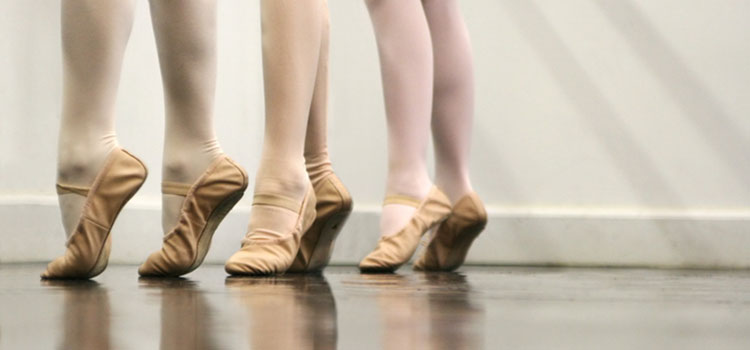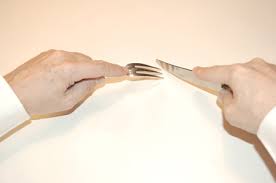
Ballet Class Etiquette, Part I
Thank you to my guest blogger, Lucia Rogers, Business Project Manager at Fort Wayne Radiology. Lucia attended a recent seminar that I hosted and during our lunch I learned that Lucia has had a long interest and participation in ballet.In fact she teaches ballet. So, I was delighted when she accepted my invitation to write a post on Ballet Class etiquette and the etiquette of attending a performance.
Enjoy!
Taking an Open Ballet Class…by Guest Blogger, Lucia Rogers
We should consider everyday lost on which we have not danced at least once. – Friedrich Nietzsche
You know, everybody really dances whether they realize it or not….From reaching down to tie your shoes, to rising up to the tips of their toes for the top shelf, to waking up in the morning and stretching as we are getting in or out of bed. We all do it and dancers just take all of these everyday movements and refine them.
Ballet is an art that requires strength, grace, discipline and so much more. Dancers are athletes and there is an attention to detail and quality of movement that made me fall in love at first sight! Children and adults of all ages enjoy taking classes to help with coordination, strength, flexibility or just because they love to move.
From the beginning of man, movement and dance has been a form of expression. It was the 1600s in the Royal Courts where ballet was conceived and where the roots of this rich culture and traditions originated. As dancers, of course your facility and technique is your means to the end but there are two other big pieces in what makes a dancer; their artistry and etiquette. You can be the most brilliant dancer in the world but if you lack the qualities of discipline, etiquette and grace in your manners, it can prevent you from reaching your possible potential. Although the expectations are different depending on the setting, location, level and more… I thought I would touch on some basic tips for those interested in participating in an open ballet class. When I teach my little ballerinas I stress the importance of manners and behavior in the classroom just as much as I do the technique and artistry. For example, my dancers are encouraged to use “yes ma’am/sir” and “no ma’am/sir” when addressing adults.
Dress the part: You have to look the part to be the part, right!? Well, no tutus and tiaras yet. Although we all may not be nor want to be professional dancers; dancers usually have some sort of dress code. The dress code can differ depending on the style of dance and whether it is an academy class, company class or open class. However, the basics are still there. A leotard and tights are always a good base in an open ballet class, with your hair up and out-of-the-way (Classic ballet bun, very stylish these days) and pink ballet shoes. Less is more, so tighter fitting clothes is preferred to better see the lines you create with your body as well as taking off any extra jewelry or accessories that might distract or get in the way. Some that take an open class may also wear skirts or tighter fitting athletic wear as well. Don’t worry, no tutus or leotards for the guys- basic shirt and active pants/shorts (or men’s tights) with white or black ballet shoes are usually acceptable for an open ballet class. We will save the beautifully adorned costumes for your stage debut.
Timing: Life is all about timing and ballet class is the same. It is always nice to arrive early to stretch, find a barre spot or do whatever you need to do before class. A ballet class is set up in a specific way to warm up the entire body and prevent injury, so you don’t want to miss out on any of these combinations. Timing is also important when it comes to asking questions. Questions are encouraged and the best time to do this is before the combination to help clarify so you execute the combinations to the best of your ability.
Within the Studio: Our everyday manners are always important when it comes to the studio. The things we learn as children are of course important: listen, pay attention, be neat and clean, do what is asked, raise your hand with questions, respect others in the studio. When the teacher walks in the room to begin classes/rehearsals dancers often stand and are attentive and ready to begin. This shows the teacher you are focused and ready to do whatever is asked.
Teachers take time to create a lesson plan for their class as it usually has a theme or works toward a goal. Learning these combinations as they are given and doing your best to keep up with the speed and music are important. If you do find that you need to make modifications due to an injury or another reason it is always best to mention this to the teacher before class begins.
One thing to expect while taking class is to receive corrections. Most people think that corrections are a bad thing but really it is the opposite when it comes to ballet. My younger dancers struggle with this a bit at the beginning when they start the ballet curriculum as everything else that they deal with they work to be perfect and without corrections/mistakes. Of course we are always striving for perfection in dance but ultimately there is no such thing as being perfect. So the corrections help us push to our next level and limits. Corrections are a wonderful thing, don’t get discouraged by them, embrace them!
Another piece to remember is that there is seniority in the studio when it comes to dancers, often times less in an open class, but it is important to be respectful of those dancers who are more advanced or are regulars in the class. Some dancers/teachers are big on this and others are not (every dancer is different). Generally these dancers go toward the front when standing in center or going across the floor. Of course there are always exceptions, as some prefer to be in other spots in the room. In the same respect though, it is also important for a more experienced or regular dancer to be respectful and a good role model for others that are less experienced. In an open class this isn’t so much a concern but this is often something to be aware of in a company level or open advanced classes.
Reverence is when the dancers bow or curtsey for the teacher (and accompanist) at the end of a ballet class. This is a sign of respect for the work done within the studio and teaches the dancers to learn how to accept applause on the stage. Dancers then clap and form a single file line to thank both the teacher and the accompanist for the class.
Dance is so rich in tradition and the do’s and don’ts change depending on the setting, level and class. I could write on for pages about specifics depending on different situations, but I will save that for another time! Hopefully this helps you a bit more if you are ever interested in taking an open ballet class. The most important thing though is to let go and enjoy the movement and expression. Dancing really is like nothing else and what a great way to express and focus on your overall wellness. You are never too old to start something new, and who knows, you might just fall in love with it as I did at 3 years old!


